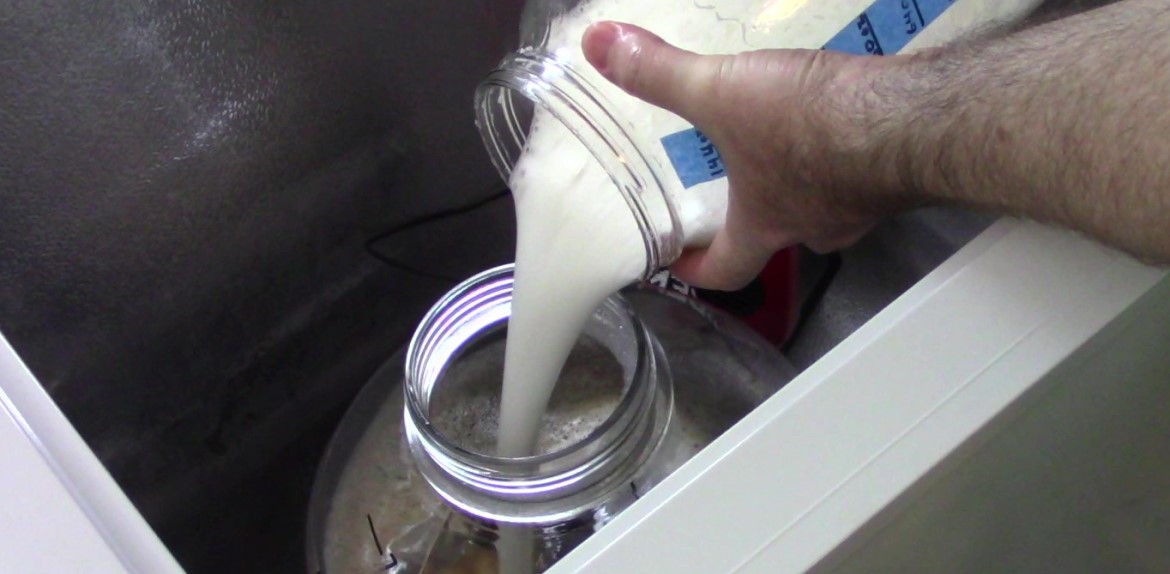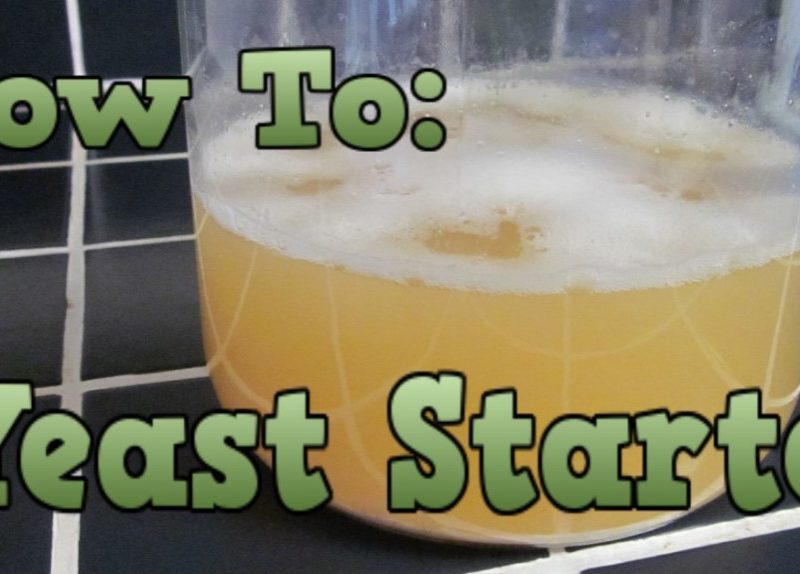In this article I try to answer some questions about yeast starters. Is yeast health important? What types of yeast starters are there? When should I use a yeast starter? When can I direct pitch yeast?
Is Yeast Health Important?
Yes!!
It is often said:
Brewers make wort, yeast makes beer!
some smart brewer
There is a reason that John Palmer includes “proper yeast management” in his “The Top 5 Priorities for Brewing Great Beer” (How to Brew, pg. 6). This is in addition to “fermentation temperature control.”
Pitching an adequate amount of healthy yeast will:
- Limit lag time: Wort is at the highest risk right after chilling. At this point it is warm, full of sugars, oxygen rich, and has a fairly high pH. These are perfect conditions for most wild yeasts and contaminates. Healthy yeast will reduce chances of contamination.
- Ensure complete attenuation: Fermentation and the several reproductive cycles required to complete fermentation are stressful for yeast. Healthy yeast will reduce the chance of a stuck fermentation.
- Reduce off flavors: Stressed yeast can produce off flavors during fermentation. Also, if the yeast are not still healthy at the end of fermentation, they may not be able to reabsorb undesirable by products generated during fermentation. Healthy yeast will produce better tasting beer!
A yeast starter is one way to ensure your fermentation is off to a good start and to put you on a path to building great beer!
Types of Yeast Starters
What does it mean to “make a starter?” People use a variety of equipment and follow different processes for making yeast starters. While there is some overlap, I tend to lump these into two types of starters. If you make starters, you may be confused what category they fit into. I know I was for many years.
Yeast Growth Starter
I have not really heard of a term used for this type of starter, but the main goal is to build up yeast cell counts. You can use one of the various calculators to determine how big of a starter is needed based on the starting cell count and target cell count. If a large cell count is needed, you may need to make a multi-stage starter. In this case a small starter is stepped up to a larger size.
Significant yeast growth requires a fairly large starter, often in the 2L to 4L size. You make the starter several days before brew day to give enough time for the yeast to settle out. Before pitching into wort, you discard the spent wort (the supernatant) and only add the yeast layer.
A stir plate helps immensely with this type of starter. Yeast produce much more energy in the presence of both sugar and oxygen. The yeast use this energy to both reproduce and to build up their cell structure and energy reserves. A stir plate ensure constant aeration of the wort.
I have seen manual methods that do not use a stir plate. These often involve shaking or manually swirling. This process is often confused with a “Shaken, not Stirred” starter, but there are differences. If done manually, you need to ensure you are introducing oxygen into the wort. The headspace of a jar with an airlock will mostly be CO2.
Vitality Starter
instead of building up yeast cell counts, the focus is on building up the health of the cells you have. So while you have not drastically increased the cell count, you put your yeast into a healthy position where they are ready to reproduce. The yeast also have healthy cell walls and the energy reserves needed to support multiple reproduction cycles.
With a vitality starter, the entire starter volume is pitched during active fermentation. This is a defining characteristic of a vitality starter. This dictates the size and timing of a starter.
I have read guidelines for size to be no more than 5% of your wort volume. This translates to a 1L starter if starting with 5.5 gallons / 20 L of wort. I will often target a little less, at around 700 ml.
Since the starter is pitched during active fermentation, a vitality starter should be made within 24 hours of pitching. 12 hours might be more ideal. Some people will make a vitality starter with wort from the brew day, only giving a few hours before pitching.
Note that a stir plate can be used for a vitality starter, but is not a requirement. Given that I have never owned a stir plate, I cannot give any specific recommendations on this area.
What is a “Traditional Starter”?
When I got into “making a starter” I purchased a kit that included a 1L flask. The instructions with the kit were pretty simple. They told me to make up a 500 ml starter the night before brew day and to pitch the entire starter into my wort the next day. For many years, I had excellent results with this method.
I thought I was building up the cell count, but I have since learned that very little growth occurs in this type of a starter. This is especially true without using a stir plate or another method for constant aeration. One calculator says that 100B cells in a 0.5L starter without a stir plate will grow to a whopping 120B. A measly 20% growth rate!
As I learned more, I realized that I was really just making a vitality starter. I have adopted strategies from the “Shaken, not Stirred” method to improve my yeast starters.
When to Direct Pitch vs Vitality Starter vs Yeast Growth Starter
There are a number of factors that determine how much yeast you need to pitch and if a starter is even needed. For a baseline beer, consider the following characteristics
- Fresh pack of liquid yeast (100B cell package)
- 5.5 gallon / 20L batch
- 1.055 or less gravity wort
- Standard ale fermentation temps
- Adequate aeration and nutrients
When to use a Vitality Starter?
When should you use a vitality starter?
- Ideal Characteristics: The above scenario is a perfect example of when a vitality starter is a great fit. While a vitality stater produces healthy and active yeast, it does not significantly increase cells counts. This means that you to be in the ball park as far as needed cell counts.
- Slightly Off Ideal: Making a vitality starter would also let you increase some of the factors. Say maybe your pack is 3 months old, or your starting gravity is 1.065. As long as your vitality starter appears active, you have some room to exceed the ideal characteristics.
- Using Harvested Yeast: Do you like to harvest and repitch yeast? I often do. I find that yeast direct pitched within 4 to 6 weeks works well. As the yeast ages beyond that, a yeast starter will revive the yeast and ensure you are using viable yeast. Data points out that stored yeast reduces in viability about 50% every month. A vitality starter will ensure your harvested yeast is healthy.
When to Direct Pitch?
When can you direct pitch a packet of yeast?
- Dry Yeast: Most dry yeast packs are rated for around 200B yeast cells. This is a good amount of yeast to pitch, and I usually direct pitch a pack. Note that the amount and pitch rate can vary between dry yeasts.
- Large Cell Count Packet: Imperial’s claim to fame is their “Right Pitch” pouch that contains enough yeast cells to direct pitch. Omega’s yeast packets also contain a larger amount of yeast (increased more in 2021).
- Small Batch: One of the benefits of making 2.5 gallon batches [10 L] is that a yeast pack containing 100B cells is just about the right pitch rate. I will often direct pitch a 100B cell pack into these batches.
- Feeling Lucky / Lack of Time: Over the years, many people have direct pitched a 100B cell pack into a batch of beer. I have done this myself. If your batch is very close to (or below) the ideal characteristic above, it is very likely you can direct pitch a 100B cell pack with good results. I would advocate making a yeast starter to reduce lag and ensure complete fermentation.
- Kveik: Kveik yeast strains tend to break all the rules. This article is really about more traditional ale and lager yeast strains. Most commercial packs of Kveik are actually an overpitch. So feel confident direct pitching a pack of Kveik yeast, even into a much higher gravity wort.
When to use Yeast Growth Starter?
Remember, the goal of a vitality starter is to put the yeast cells into a healthy state before pitching. It is not to produce a lot of yeast cell growth. There are many cases where even a healthy and active 100B cell pitch is not enough.
- Large Batch Size: If you double your batch size to 10 gallons [40 L] you also need to double the amount of yeast you pitch.
- High Gravity: This one can be tricky to judge because there is a sliding scale. There are different needs for a 1.040 wort vs 1.060 vs 1.080 vs 1.110. For me, it is around the 1.065 or 1.070 area where start to think more about my pitch rate.
- Cold/Lager Fermenting: The cooler your ferment your batch, the more yeast is needed. The general guidance is that at traditional lager temps (around 50F / 10C) you need to double your pitch rate. I am not an experienced lager brewer to give real advice here.
Alternatives to Yeast Growth Starters
What are the alternatives to making large starters when you need to increase yeast cell counts? Since I don’t have a stir plate, below are some strategies that I have used.
- Multiple Packs of Liquid Yeast: A simple approach is to just buy as many packs of yeast as needed to reach your target cell count. If you need 400B cells, you purchase 4 packs of 100B cell count yeast. The downsize is the cost. The price of 2 packs of 200B cell count yeast is likely a little more reasonable. Actually, this is a strategy that I have never used myself. I use the following strategies.
- Multiple Packs of Dry Yeast: One pack of dry yeast containing 200B cells is often half to a quarter of the price of the equivalent cell count of liquid yeast. There are many excellent dry yeast strains available now. Pitching 2 packs into a cold fermented lager or a big Imperial Stout is an easy and cost effective approach. You can even pitch packs of two different yeast strains to add in a little variety.
- Reusing Yeast / Yeast Cakes: Another cost effective and relatively easy approach is to build up the cell counts needed in a batch of beer instead of on a stir plate. Say you want to brew a Barleywine. You plan out a batch of Blonde or Pale Ale and then pitch some or all of the yeast cake from that batch. I use a general rule of thumb that the entire yeast cake from a 5 gallon batch will contain around 800B cells. From there I figure out how much of the slurry to pitch.
- 2.5 Gallon (10L) Batches: This is really just a repeat of the prior strategy, but it is worth extra emphasis. I often brew 2.5 gallon batches. For that size batch, I direct pitch a pack from White Labs or Wyeast. The harvested yeast from that batch is plenty to be used for a medium gravity 5 gallon batch. For me, this flow is an easy way to try out new yeasts and a cost effective means to produce multiple bathes out of a single yeast pack.
Cell Count Examples
While the general vibe of this article is that you do not need to chase ideal pitching rates and that you don’t always need to build up large cell counts, I wanted to include some pitch amount calculations. I think it is useful to understand how changes impact recommended cell counts. You can then use this to drive your own decisions.
The following numbers come from using the Homebrew Dad’s Online Yeast Starter Calculator. I use most of the defaults (such as a 100B cell pack with 97% viability and using a stir plate), but I changed the Batch Volume to 5.5 gallons and the Flask Size to 1.5 L (which I think means a flask big enough for a 1.5 L starter). The following table shows the recommended cell counts and starters for the baseline and for one change from the baseline, where the baseline is 5.5 gallons (20L) of an Ale at 1.055 OG.
| Change | Pitch Count | Starter Type | Generated Cells |
| <baseline> | 212B cells | One-stage: 1L | 238B cells |
| Lager | 424B cells | Two-stage: 1L + 1.5L | 431B cells |
| 1.110 OG | 405B cells | Two-stage: 1L + 1.5L | 431B cells |
| 11-gallon (~40L) | 424B cells | Two-stage: 1L + 1.5L | 431B cells |
| 4-month old pack (39% viability) | 212B cells | One-stage: 1.5L | 251B cells |
| 200B cell pack | 212B cells | One-stage: 1L | 299B cells |
Note that the Lager, 1.110 OG and 11-gallon batch all require about double the pitch count of the baseline, and they all use the same two-stage starter. Even using a 4-month old pack, does not change the starter recommendation much; just from a 1L to a 1.5L starter. Making a starter with the 200B cell pack to get to 212B cells is not really needed.
If you are curious, an 11-gallon batch of Lager at 1.110 OG requires 1,620B cells! Even with a flask big enough for a 5 L starter, this requires a four-stage starter to generate the recommended cells!!
Recap
I tried to give some general guidance on yeast starters above. Keep in mind that beer is a complex matrix of factors. These factors add up to influence your fermentation needs. I might feel fine pitching a vitality starter into a 1.065 batch, but maybe less confident if I purchased the yeast mail order and I plan to ferment on the cool side of common ale temperatures.
The primary factors I take into account are:
- Starting Yeast Count
- Yeast Health and Viability (Freshness/Storage/Handling)
- Batch Size
- Wort Gravity
- Aeration & Nutrients
- Fermentation Temperature
While I have read a significant amount on yeast, much of this article is based on my own experience. I encourage you to find methods that both works for you and also fits with your brewing style. Textbooks and calculators can be valuable tools, but so can your own eyes and taste buds.
If your experience lines up with mine, or differs, please let me know in the comments below. Also, let me know if you have any questions on fermentation or yeast starters that I might be able to help with.
Resources
Be sure to check out my YouTube video where I walk through making a Vitality Starter using the “Shaken, not Stirred” process.
Below are a few resources related to yeast and starters that I have found helpful.
- Shaken, not Stirred: The Stir Plate Myth Buster by Saccharomyces: A very interesting read on using a stir plate vs the Shaken-not-Stirred method.
- Homebrew Dad’s Online Yeast Starter Calculator: While I don’t use yeast calculators often, I find this one to be useful. There are others out there, some of which are less complex than this one.
- Escarpment Labs – Yeast Basics playlist: An incredible series of videos that covers a lot of ground on yeast and fermentation. Once you have finished these 5+ hours of videos, be sure to check out other great videos on their channel.
- “Yeast: The Practical Guide to Beer Fermentation” by Chris White & Jamil Zainasheff: A very useful book that covers a wide range of topics on yeast and fermentation.
- “How to Brew” by John Palmer: If you brew beer, this book is a must! The chapters on yeast health and fermentation are excellent resources for beginner, intermediate and advanced brewers.



